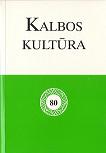Naujųjų skolinių vartosena: kalbos kultūros ir stilistikos takoskyra
The usage of new loan words: the divide between language culture and stylistics
Author(s): Jurgita GirčienėSubject(s): Language and Literature Studies
Published by: Lietuvių Kalbos Institutas
Keywords: New loanword; lexicon; standard language; sociolinguistics
Summary/Abstract: From the functional point of view all new loan words can be divided into two main groups: 1) the so called mandatory loan words whose main function is to name (relatively) new realia, and 2) supplementary loan words whose main 152 function is to make the language sound new and expressive. The latter, which are much rarer than the first group, are characterised by a contextual, single use, whereas their equivalents can be easily found in the existing lexicon. Part of the new loan words naming the new realia have adapted to the system of the Lithuanian language; they replenish the lexicon of Standard Lithuanian and become the norm of the standard language. Some of them are replaced by Lithuanian equivalents. As a result, from the point of view of language culture, such loan words are treated as non-normative. Such loan words sometimes come back to the public written use; however, then they only perform the role of expressive stylistically marked elements of the text. So the stylistically marked anti-norm is foregrounded. Supplementary (contextual) loan words are usually unknown to the addressee. Therefore, they have a significant impact on the reader. It is mainly the expression of a new foreign attitude which is the main function of these loan words used in texts for stylistic and socio-psychological reasons.
Journal: Bendrinė kalba (iki 2014 metų – Kalbos kultūra)
- Issue Year: 2007
- Issue No: 80
- Page Range: 143-152
- Page Count: 10
- Language: Lithuanian

